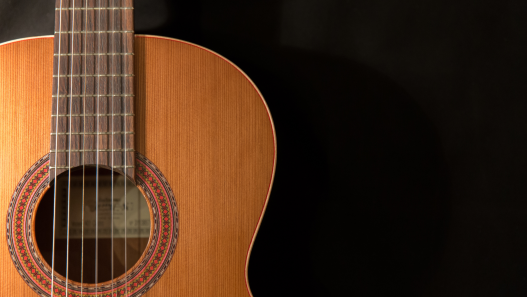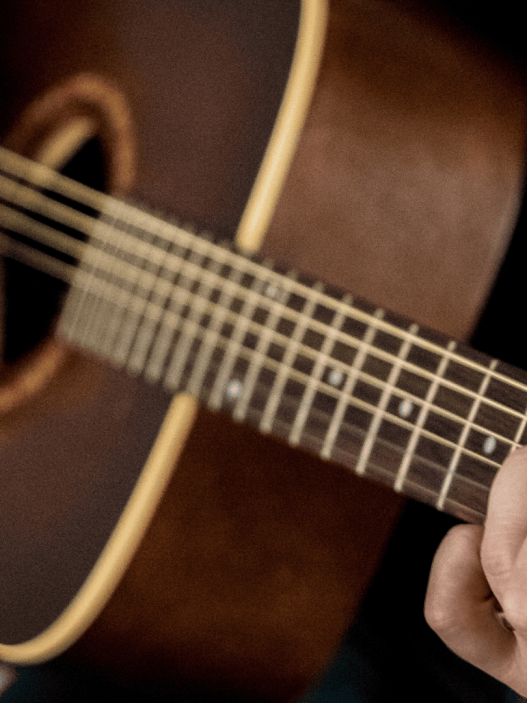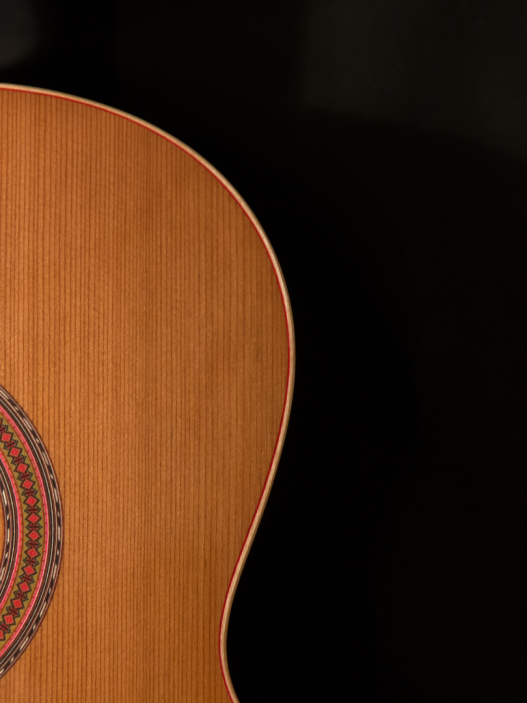Finding the key of a song through its chords is a powerful skill that instantly boosts musical understanding and performance.
Knowing how to find the key from chords opens countless creative doors for anyone eager to play along, write original music, or simply strengthen their appreciation of music.
Whether struggling with a favorite track or aiming to collaborate with others, mastering this process ensures confidence and versatility.
By following clear, expert-backed steps, any musician can quickly identify the key, harmonize with precision, and enjoy music-making at a higher level.
See for yourself the satisfaction of interpreting chord progressions like a pro and take the next step toward musical mastery, right from the comfort of home.
Why Finding the Key from Chords Matters?
Finding a song’s key gives you music superpowers! When you know the key, you can play along with songs more easily.
It helps when you want to change a song to suit your voice better. It’s also super helpful for writing your own songs or playing with friends.
The key is like the home base for all the notes and chords in a song. It gives the music its unique feeling – happy, sad, or somewhere in between.
When you’re trying to learn songs by ear, knowing the key helps you make better guesses about which chords might come next. This makes learning new songs much faster.
For singers, knowing the key means you can change it to fit your voice range. Too high? Move to a lower key. Too low? Shift to a higher key.
Step-by-Step Guide: How to Find the Key of a Song from Chords?
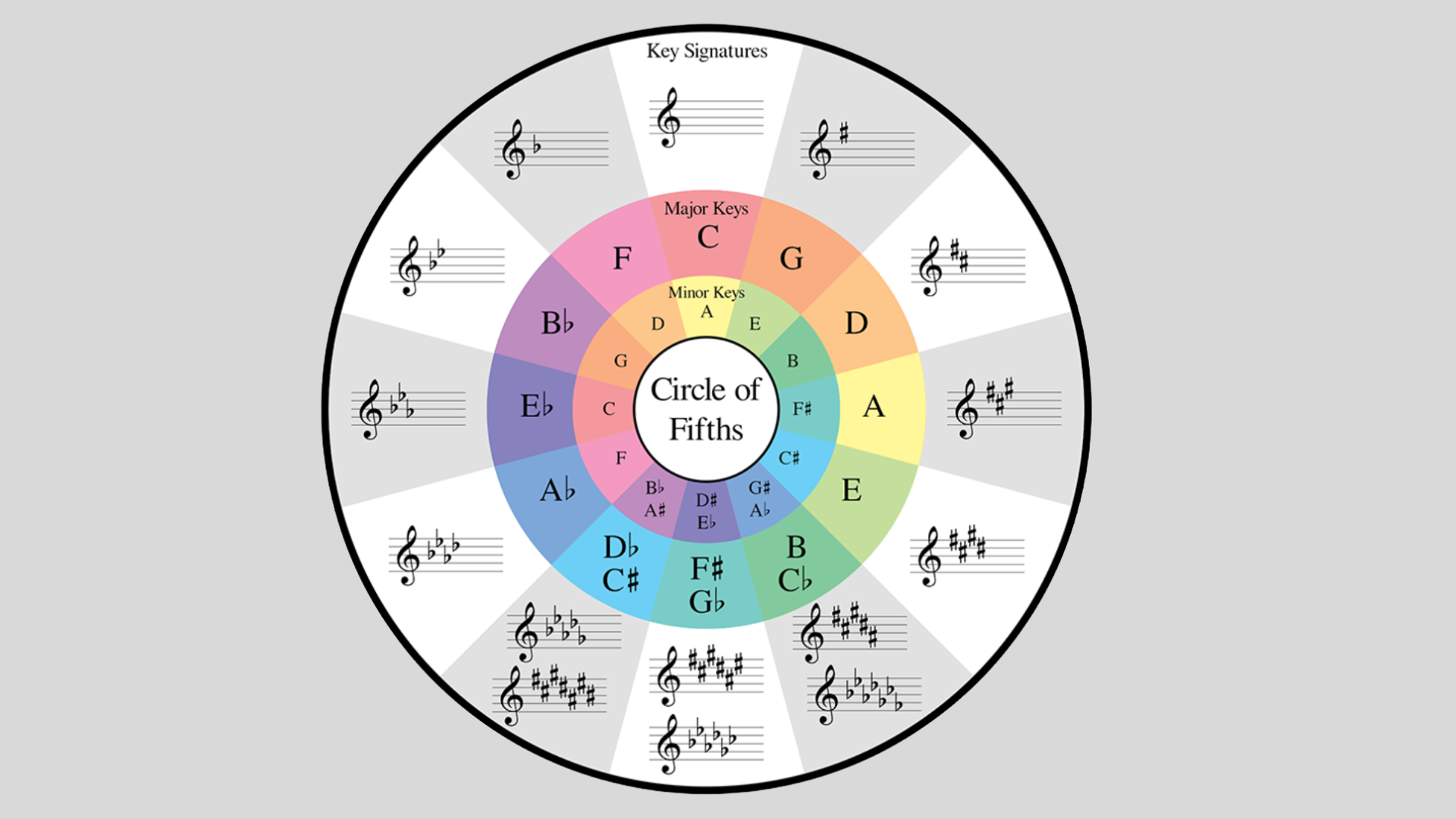
Finding a song’s key doesn’t have to be complicated. With the right approach, anyone can crack this musical code without fancy tools or years of training. Let’s break it down into simple steps you can follow right away.
1. List All the Chords
Listen carefully and write down every chord you hear. Focus on the most repeated or prominent chords; these are your biggest clues.
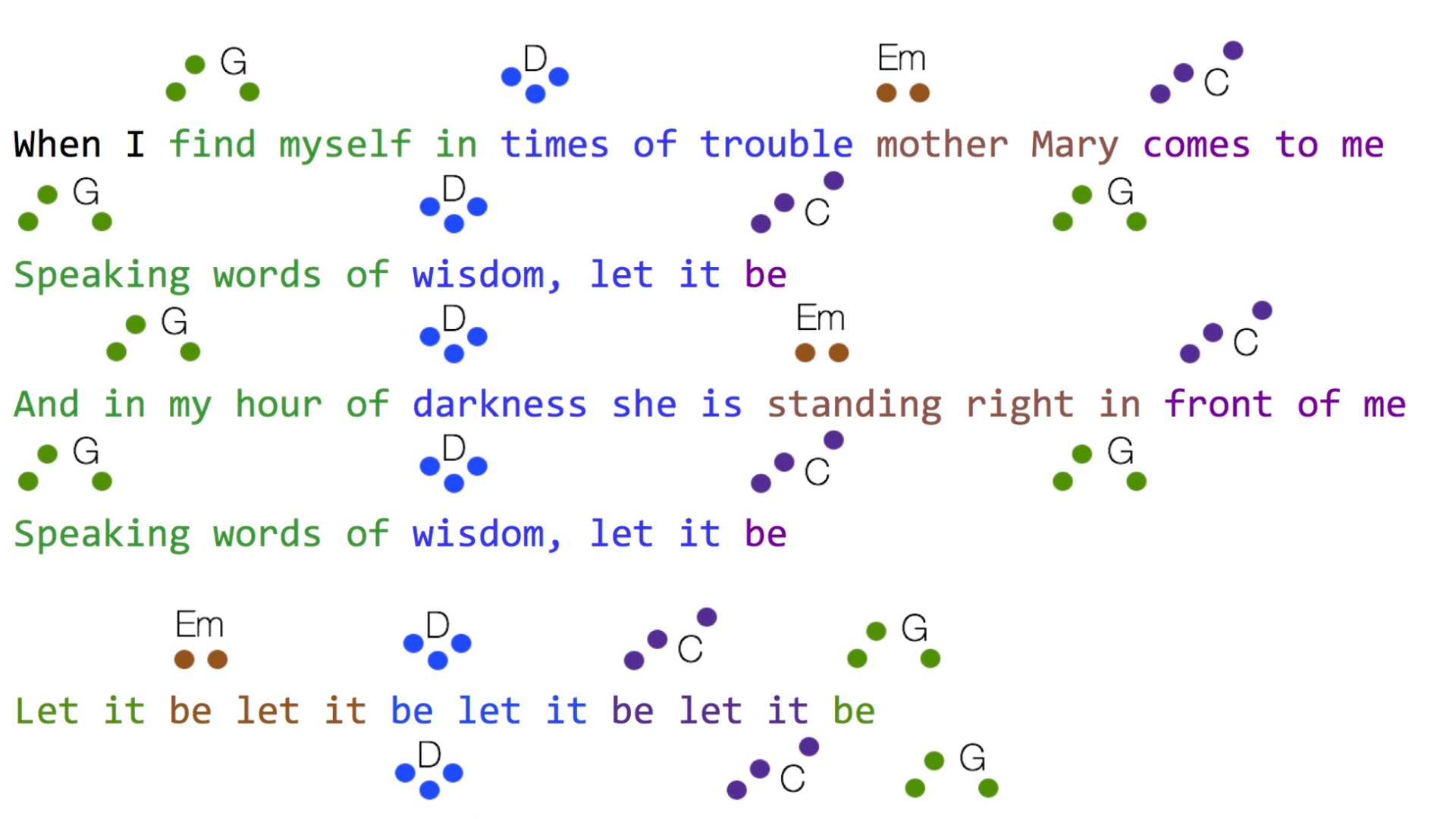
| Example: “Let it be” by The Beatles |
Tip:
Even if you only know a few chords, that’s a great start!
2. Spot Common Chord Patterns
Compare your chord list to the standard diatonic chords for major and minor keys:
Major Key Chord Pattern
| Roman Numeral | Chord Type | Example (C Major) |
|---|---|---|
| I | Major | C |
| ii | Minor | Dm |
| iii | Minor | Em |
| IV | Major | F |
| V | Major | G |
| vi | Minor | Am |
| vii° | Diminished | Bdim |
Minor Key Chord Pattern
Minor keys use the same chords as their relative major, but the “home” chord is different (e.g., A minor uses the same chords as C major, but resolves to Am).
3. Match Chords to Possible Keys

Look at your list of chords and see which key they might belong to. Most songs use chords that all come from the same key.
Don’t panic if one or two chords don’t seem to fit. Songs often borrow chords from other keys to add color.
For example, if your song uses C, F, G, and Am, these all belong to C major. But if it uses C, F, G, and D, then C major is still the best fit (with D being a borrowed chord).
Tip:
Songs often start or end on the tonic (“home”) chord.
4. Identify the Tonic Chord

Listen for the chord that feels like the resting point or resolution. This is usually the key to the song.
This “home” chord is usually the key of the song. If the home chord is C, the song is probably in C major (or maybe A minor).
The Tonic chord often appears at the end of sections, especially at the very end of the song. When you land on this chord, the music feels settled and complete.
Try playing different chords and see which one feels like the natural ending point. When you hit the right one, it will feel “right” to your ears.
5. Confirm Major or Minor
Major keys usually sound bright and happy. Minor keys tend to sound more sad or serious.
Listen to the overall mood of the song. Then check if the home chord is major or minor. This will tell you if you’re in a major or minor key.
Sometimes it’s hard to tell if a song is in C major or A minor (they share the same chords). The trick is to find which chord feels like home – C or Am.
You can also listen to the melody. If it often uses the notes of a major scale, you’re probably in a major key. If it uses minor scale notes, you’re likely in a minor key.
Remember:
Every major key has a relative minor with the same chords but a different tonal center (e.g., C major and A minor).
6. Double-Check with a Key Finder Tool
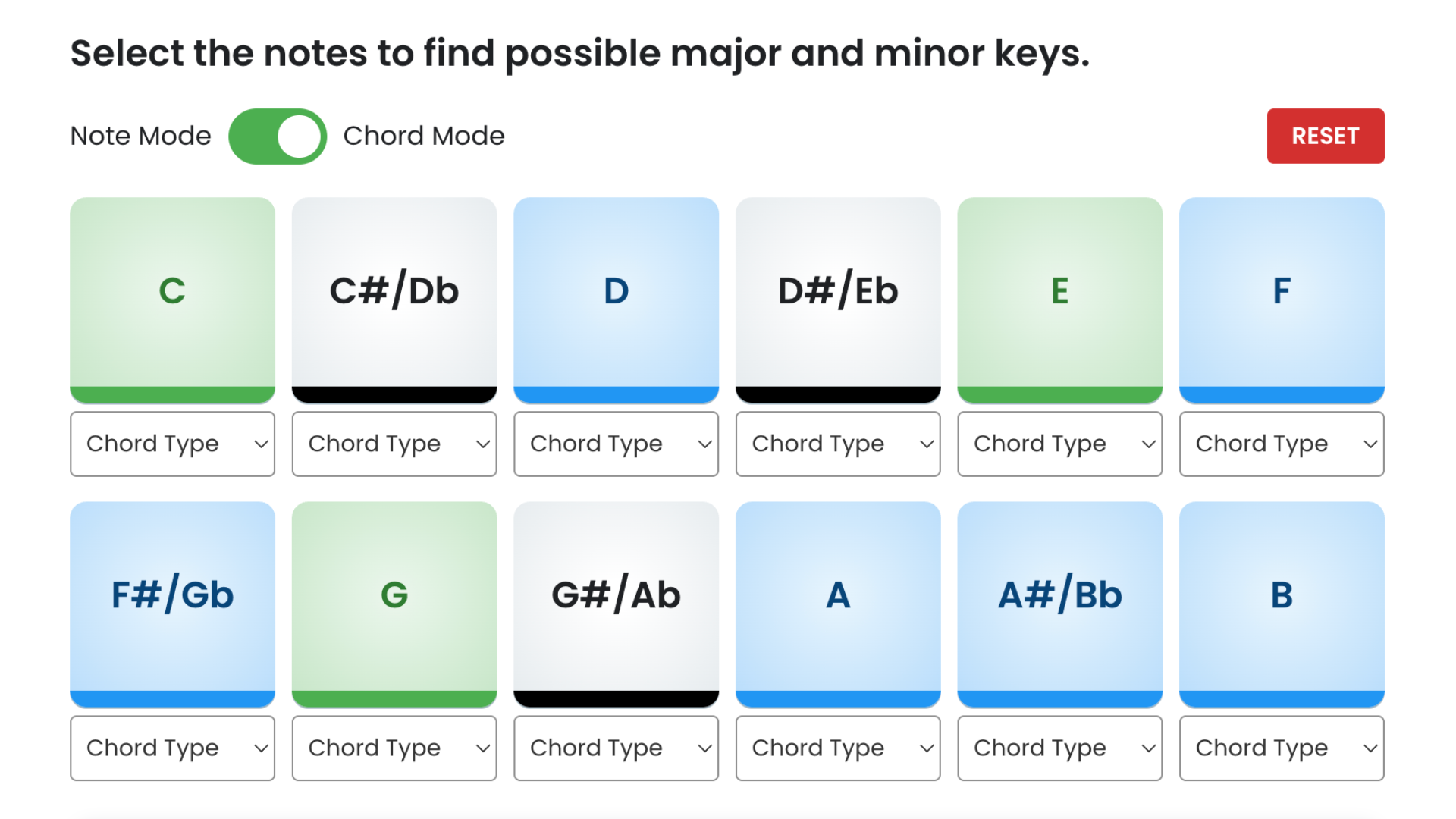
If you’re not sure, try using an online key finder tool. These can be very helpful when you’re just learning.
You can also play the scale of the key you think it might be. If the notes sound good with the song, you’ve probably found the right key!
Another check is to play a simple chord progression in your chosen key while the song plays. If they clash, try a different key or ask a friend with a good ear to listen and see if they agree with your choice of key.
Visual Aid: Chord/Key Chart
| Key | I | ii | iii | IV | V | vi | vii° |
|---|---|---|---|---|---|---|---|
| C Major | C | Dm | Em | F | G | Am | Bdim |
| A Minor | Am | Bdim | C | Dm | Em | F | G |
Real Song Examples
-
“Let It Be” by The Beatles
Chords: C, G, Am, F
Key: C Major -
“Someone Like You” by Adele
Chords: A, E, F#m, D
Key: A Major -
“No Woman, No Cry” by Bob Marley
Chords: C, G, Am, F
Key: C Major
Tips for Tricky Situations
Some songs change keys in the middle. If this happens, work out each section on its own.
Some songs use lots of chords that don’t seem to fit any key. These might be using fancy music tricks, but the basic steps still work.
Trust your ears! Sometimes the “feeling” of the key is the best guide. Use these few basic guidelines for an easier time placing the keys.
- Borrowed Chords: Some songs use chords from outside the main key for color. Focus on the most frequent chords.
- Key Changes: If the song changes key, analyze each section separately.
- Short Progressions: With only a few chords, trust your ear—play each possible key and see which feels like “home.”
Recommended Tools & Further Reading
Key Finder Tools:
For further understanding of musical theory and a solid foundation to help you in the task, check out our other guides on musical instruments.
Wrap Up
Finding a song’s key from chords gets easier with practice. Soon you’ll be able to spot keys quickly just by hearing a few chords.
Try these steps on your favorite songs. Before long, you’ll be finding keys like a pro!
Remember that music isn’t about rigid rules. Sometimes songs break the patterns, and that’s part of what makes music exciting.
The more songs you analyze, the better you’ll get at finding the key from the chords. Keep a notebook of songs and their keys to build your skills.
Now play some music and have fun with your new skill! With a bit of practice, you’ll be spotting keys in no time. Share with us your musical success stories in the comments down below.
Frequently Asked Questions
What If My Chords Don’t Fit Any Key Perfectly?
Many songs use borrowed chords. Focus on the most frequent chords, especially at the beginning and end.
Why Do Some Songs Have Unclear Keys?
Some music is intentionally key-neutral or uses many borrowed chords for creative effect.
How Often Do Songs Change Keys?
About 20–30% of pop songs change keys, often to add excitement to the final chorus.






